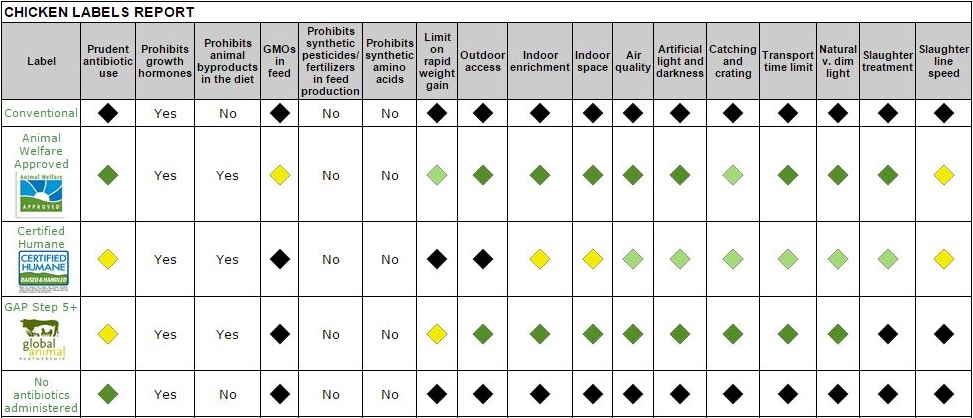3/12/2015
Why Antibiotic-Free Does Not Mean Humane
Major companies are phasing out the common practice of putting human relevant antibiotics in daily farm animal feed. We applaud these efforts for the benefit of public health, because the overuse of such drugs can lead to dangerous antibiotic-resistant superbugs.1
Many assume if factory farms eliminate antibiotics, this will mean better quality of life for animals. That’s actually a huge misconception; antibiotic-free does not necessarily indicate higher welfare.
Case-in-point: Does this antibiotic-free flock look humane to you?
With 30,000 chickens per house, each bird gets only 2/3 sq ft of space. Fusion, 2015
Poor genetics can result in leg deformities, while squatting continuously on dirty litter can cause feather loss and skin irritation. Fusion, 2015
Windowless barns mean chickens never see natural daylight. Fusion, 2015
There is often no difference between a conventional factory farmed chicken flock and an antibiotic-free flock, other than what’s in the feed. Perdue farmer-turned-whistleblower Craig Watts says, “They don’t mind putting that label on there and jacking that price up… but ‘no antibiotics’ doesn’t mean ‘no drugs.’ Most people think it’s drug free. These birds couldn’t survive in this environment without something.”
Last week we posed the question: Why do factory farms need to feed daily antibiotics to animals in the first place? They are housed in crowded barns with no natural light or fresh air, and genetically bred to grow so big, so fast they can barely stand on their own two legs in their last week of life. Leg deformities are common, and litter full of feces and ammonia is not often changed in between flocks.2,3
Unless the living conditions and genetics (which are the root of the problem) are addressed, companies will keep finding ways to maintain the status quo rather than acknowledge the factory farm system itself is not working. Even if antibiotics are completely phased out, other types of medicated feed can replace them.
This chart from Consumer Reports shows what antibiotic-free farms lack compared to the independent animal welfare audit labels Animal Welfare Approved, Certified Humane, and Global Animal Partnership Step 5+. Without a valid third party label, there is no guarantee that “no antibiotics” means anything other than factory farmed meat.
 Black diamonds indicate conventional industry baseline standards; yellow to dark green reflect increasingly higher welfare.
Black diamonds indicate conventional industry baseline standards; yellow to dark green reflect increasingly higher welfare.
So, what will it take for higher welfare farming to be the norm? Food businesses continue to shape their practices based on consumer demand. It’s encouraging to see their response to the antibiotic-free movement. However, chickens will see no difference in quality of life until companies acknowledge customers also want natural light, more space, and slower growth for chickens.
Sign the petition for Better Chicken now.
By Nina Farley, US Head of Public Engagement
Sources:
1. https://www.whitehouse.gov/sites/default/files/docs/carb_national_strategy.pdf
2. https://www.youtube.com/watch?v=wm5MdlDeEk0
3. https://www.youtube.com/watch?v=YE9l94b3x9U
